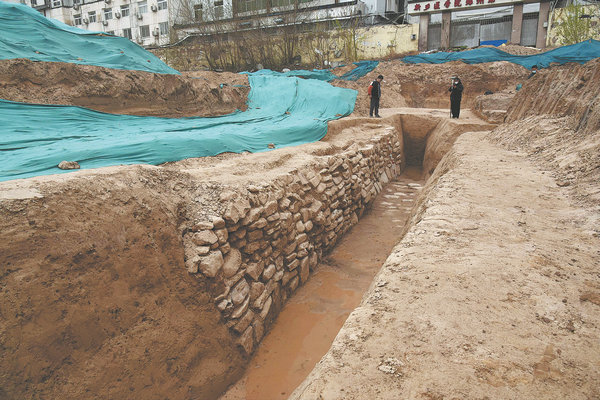

Researchers from the Henan Provincial Institute of Cultural Heritage and Archaeology have recently made a major breakthrough at the Shang Dynasty (c. 16th century-11th century BC) capital city ruins in Zhengzhou, Henan province.
Their findings shed new light on the sophistication of its urban planning mechanism and water systems, features of early civilization that were less well-known but nonetheless of great importance.
The finding, which consists of the largest water system remains from the early Shang Dynasty found to date, has filled a critical gap in comprehending the spatial layout of the southern section of the Zhengzhou Shang City, an archaeological site of the Bronze Age Erligang Culture in Central China.
Current studies give it four chronological phases from 1630 to 1400 BC.
The ruins, which date back more than 3,600 years, are situated in the heart of historical Zhengzhou city, encompassing a sprawling area of 25 square kilometers. Academically, it has been widely recognized as the capital established by the first ruler of the Shang Dynasty, and played a pivotal role in the later development of Shang civilization, which was mainly centered in the Yellow River Basin.
The Shang Dynasty is universally known for its sophisticated oracle bone inscriptions and mysterious use of complex bronze ware at ritual and religious celebrations, at a time when most Western contemporaries were simply using bronze to make tools or weapons.
Archaeological experts at the site recently unearthed three early Shang Dynasty ditches located in the southeastern region of the site of Shang City's inner city in Zhengzhou. These ditches, distinguishable by their large openings and relatively narrow bottoms, represent a remarkable ancient engineering feature.
One of them displayed signs of being adapted from a natural river channel, while the other two were entirely human-made. The ditches stretch approximately 540 meters, with the widest point reaching 12 meters and the deepest point descending about 4 meters.